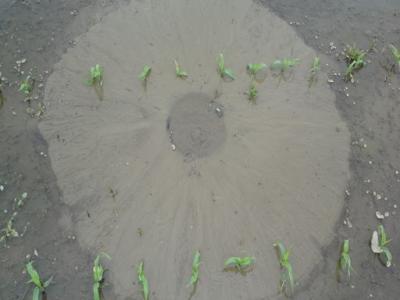Image Processing

Recent advances in generative visual content have led to a quantum leap in the quality of artificially generated Deepfake content. Especially, diffusion models are causing growing concerns among communities due to their ever-increasing realism. However, quantifying the realism of generated content is still challenging. Existing evaluation metrics, such as Inception Score and Fréchet inception distance, fall short on benchmarking diffusion models due to the versatility of the generated images.
- Categories:
 103 Views
103 ViewsThis work presents a specialized dataset designed to advance autonomous navigation in hiking trail and off-road natural environments. The dataset comprises over 1,250 images (640x360 pixels) captured using a camera mounted on a tele-operated robot on hiking trails. Images are manually labeled into eight terrain classes: grass, rock, trail, root, structure, tree trunk, vegetation, and rough trail. The dataset is provided in its original form without augmentations or resizing, allowing end-users flexibility in preprocessing.
- Categories:
 524 Views
524 ViewsThis dataset, titled "Synthetic Sand Boil Dataset for Levee Monitoring: Generated Using DreamBooth Diffusion Models," provides a comprehensive collection of synthetic images designed to facilitate the study and development of semantic segmentation models for sand boil detection in levee systems. Sand boils, a critical factor in levee integrity, pose significant risks during floods, necessitating accurate and efficient monitoring solutions.
- Categories:
 288 Views
288 Views
These are some graphs that record the human ocular electrical signals and ocular impedance signals, each image from top to bottom is a time-frequency graph of the EOG, the EOG signals, the time-frequency graph of the impedance signals, the impedance signals, and the impedance signals, respectively. This dataset is used to train the eye movement detection model.
- Categories:
 128 Views
128 Views
This is the video dataset for SFDM paper. Only the first 30 seconds are to be used. The last 10 seconds are extended so that the trimming of the video does not make each clip end abruptly before 30 seconds.
File naming style: {case study number}{sequence}{clip number}{opt: falsely detected as other sequence}.webm
- Categories:
 144 Views
144 ViewsWe introduce a new image dataset named FabricDefect, which focuses on the warp and weft defects of cotton fabric. The images in the FabricDefect dataset were manually collected by several experienced fabric inspectors using a high-definition image acquisition system set up on an industrial fabric inspection machine. The sample collection process lasted for three months, with daily sampling from 6 a.m. to 8 p.m., covering various weather conditions and external lighting scenarios. All images were meticulously gathered according to predefined standards.
- Categories:
 547 Views
547 Views
- Categories:
 265 Views
265 Views
This dataset is collected from Kaggle (https://www.kaggle.com/datasets/nazmul0087/ct-kidney-dataset-normal-cyst-tumor-and-stone ). The dataset was collected from PACS (Picture archiving and communication system) from different hospitals in Dhaka, Bangladesh where patients were already diagnosed with having a kidney tumor, cyst, normal or stone findings.
- Categories:
 179 Views
179 Views
This dataset (samplePointsCities_20240811_harmonized.csv) was used for the Rescaled Water Index (RWI) proposal. The GitHub page (https://github.com/edujusti/Rescaled-Water-Index-RWI) contains the Python and JavaScript (Google Earth Engine) scripts used for data production, statistical analyses, and result visualization of the RWI spectral index.
This spectral index is a modification of MNDWI to enhance the mappings of water surfaces.
- Categories:
 116 Views
116 Views
This dataset contains still thermal frames from thirty patients undergoing awake craniotomy for brain tumor resection. The data were used as part of a study on automated craniotomy masking, where the portion of the craniotomy image which contans the brain is identified. The data contains manually generated gold-standard masks, as well as masks created with the proposed method in "Automated Craniotomy Masking for Intraoperative Thermography".
- Categories:
 70 Views
70 Views

